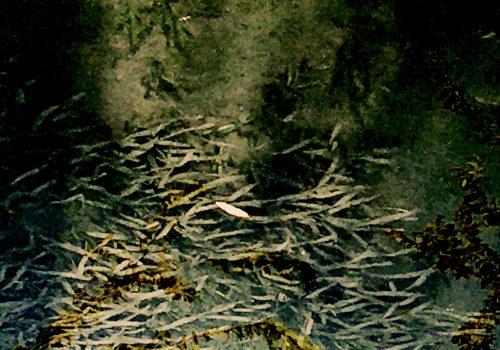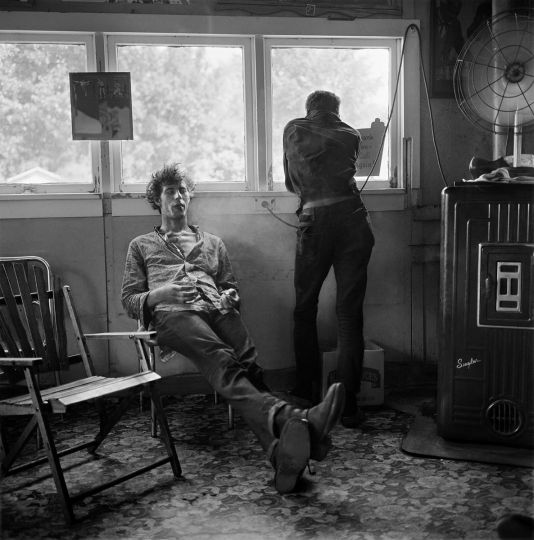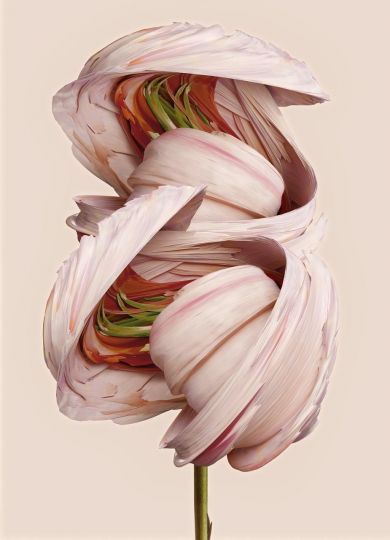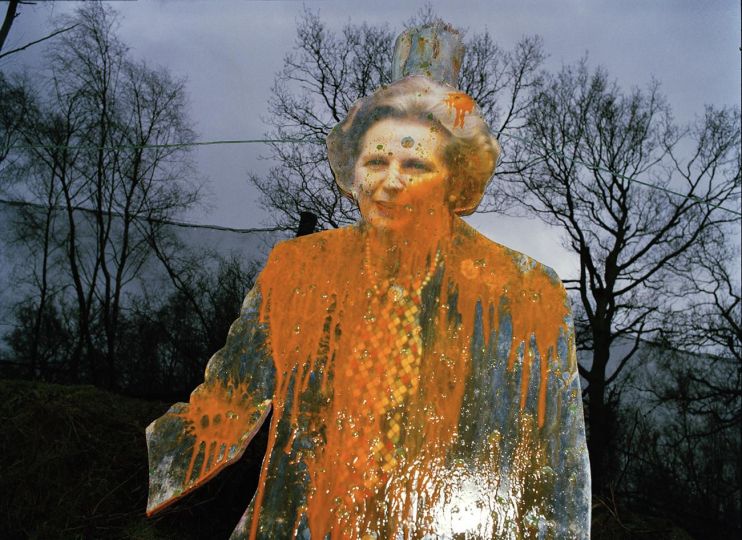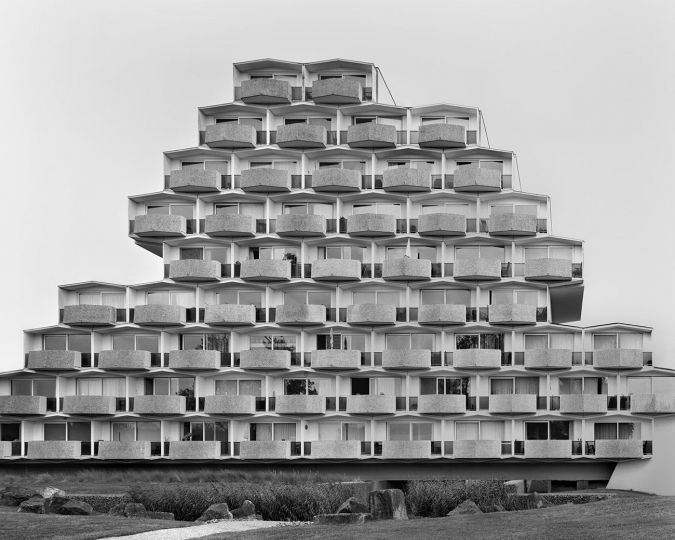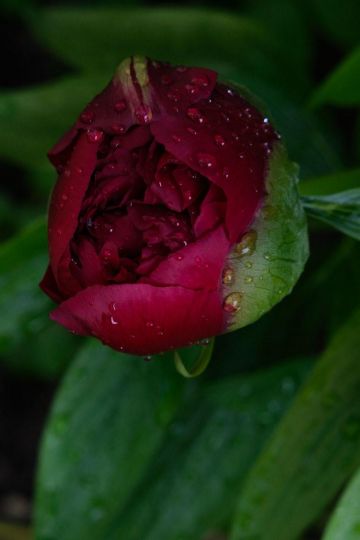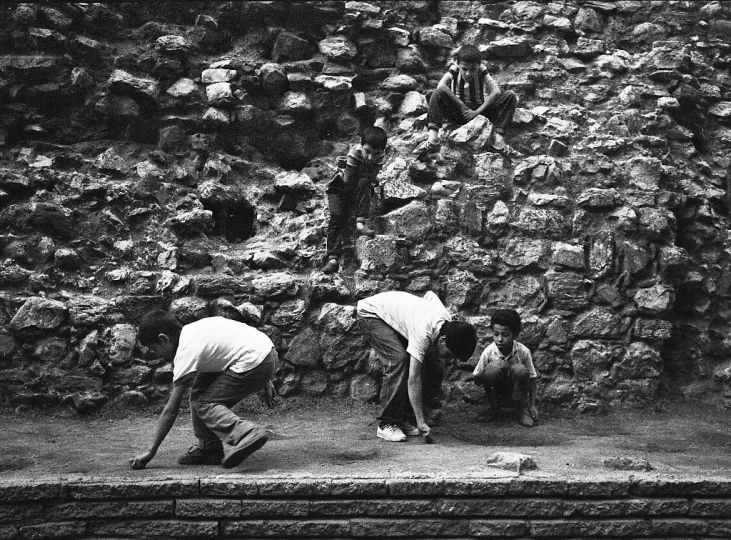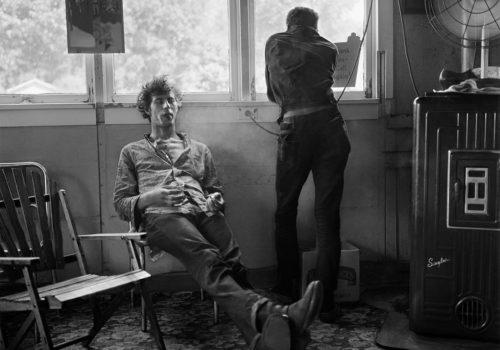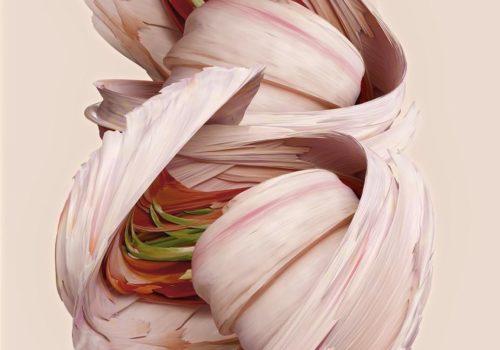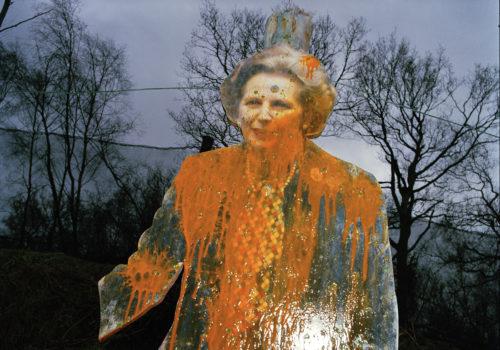Lab 1930. Fotografia contemporanea Milano: Pietro Bologna , Alessandra Calò
Pietro Bologna (Italy) 1972 (images 1-3)
This series was born during my daily walks – a ritual that is necessary for me – in a suburb, as there are many. An abandoned field that welcomes spontaneity. So, one photo a day for years, knowing that I am taking something home that will manifest itself later. The prosperity of scrapes constantly generating new meanings. Being able to stop. (Pietro Bologna)
These works are is characterised by a strong blurring: only the distance allows the image to be fully read. Taken with an iPhone 6 and without any post-production, they were created by zooming in heavily before taking the picture. It was possible to print them in large format (1 x 1 m) after scanning the original image onto film
“Pietro Bologna finds these sovereign, autonomous pictorial events in the objective, material chaos of appearances and takes them out of their original context. By enlarging the selected photographs, the depicted—often fragmentary—things take on a strange, enchanted, enigmatic life of their own, whereby they are removed from the unlimited richness of material phenomena“ (Lóránd Hegyi)
Alessandra Calò (Italy) 1977 : χθόνιος (chthonic), 2024 (images 4-6)
I wanted to call my project χθόνιος (“chthonic” in Greek) because I set out from the depths of the earth and the darkness to tell a story. The story is my personal vision of a Mediterranean little island which welcomed me and is the result of hours of walking, observing and listening to all the living elements that make up the island: the land, the stone, the people. In this precise order, I have tried to construct (or perhaps recompose) a series of events that have characterised and made this place unique.
The χθόνιος (chthonic) series is the result of an ancient process of photographic printing dating back to the 19th century: the latent image imprinted on paper – through the use of the bromograph – is gradually made visible through manual processing with greasy oils applied in several successive layers.
Alessandra Calò is artist and photographer, she has been experimenting from the beginning of her career the use of new languages that allow her to deepen her grasp of themes related to memory, identity, and to the language of the photography itself.
Dominant practice in her work is the is the recovery and reinterpretation of archival materials: she does not intend to implement a nostalgic evocation of the past but to propose a new vision of reality.
Lab 1930. Fotografia contemporanea
20135 Milano
http://www.lab1930.com
MPV Gallery Oisterwijk The Netherlands: Michiel Kluiters (The Netherlands) 1971 (Images 7-9)
Michiel Kluiters makes monumental photographic works in which he plays with the language of architecture. To make his photographs, he manufactures crudely constructed scale models that serve as constellations with which to capture light. The spatial illusion is revealed when he turns on the light. This is the moment the artwork is created. Without this moment of touch by light, the empty space is nothing more than a dead object.
“I like to think of my photographic works as portraits of my experiential world. A staged space that encloses my field of vision, in which I can ‘reside’. I approach an empty space as if it were an object, and I am fascinated by how I can move within it and explore the space visually. I set myself the goal of tracing this emptiness, and then establishing how interesting its definition might be. Personally, I experience emptiness as full.” – Michiel Kluiters –
Kluiters’ current working method is quite irrational. He allows the crudely built models to emerge under his hands without a preconceived and elaborate plan. It lets the material itself partially inspire what he creates, the way he handles it and what he sees through it. As a result, the final image is layered and of deeper meaning than reality indicates. It is not simply a passage to another space, but it gives access to the personal experience of the creator. The spaces are reminiscent of unfinished utopian buildings or abandoned ruins, still under construction or already decaying. This introduction of a sense of time – of something indicative of future completion or of a lingering memory of something irrevocably past – contributes to the inherent instability of these works.
On Friday Kluiters will be signing his book at 18:00 at the stand of Jap Sam Books at the Book Fair!
MPV Gallery
5061 HL Oisterwijk, The Netherlands
http://www.mpvgallery.com
Open Doors Gallery London: Javier Hirschfeld Moreno [Spain)1979 (Images 10-12)
Artist and curator Javier Hirschfeld Moreno is currently living in London. Moreno is interested in the role and responsibility of photography in the representation of the self and also collective identities.
Moreno’s ongoing Profile series explores the artist’s interest in art history and portraiture as well as his fascination with self-representation. By using ‘Cartes de Visite’, the trading cards from the 1860’s, and a collection of screenshots amassed from contemporary dating platforms like Tinder and Grindr, Javier examines themes of identity and visibility, documentation and archive, as well as emotional and surveillance capitalism. By cutting into his collection of original nineteenth century cards and removing the figures from the past, Javier creates a window. Then using selected images from his collection of digital screenshots he has captured on his phone, the artist spends time considering the perfect ‘match’ between then and now by carefully arranging the print behind the window.
This simple and elegant idea opens up a portal through the history of photography and in the same moment creates a dialogue between society then and society now. From the beginning of modernity with all its aspirations and anxieties, to current social preoccupations around our images.
Open Doors Gallery
WC2R 1LA London
www.opendoors.gallery
Shoobil Gallery Antwerp: Faryda Moumouh (Belgium) 1978 (images 13-15)
Faryda Moumouh embodies a distinctive voice within contemporary photography, expertly delving into the intricacies of visual culture. Her oeuvre transcends mere documentation and instead offers an in-depth consideration of themes related to identity, history, and the human condition. With series such as “Does a stone remember?” and “Does the earth remember?” Moumouh embarks on a visual and archaeological expedition, exploring the interconnections between locations, memories, and natural remains. Her most recent work, “Transcultural Layers,” is an attempt to unravel the multifaceted dimensions of contemporary polarization and the repercussions of social media on our cultural and identity perceptions. Using a fusion of disparate sources and a layered approach to image construction, Moumouh constructs a tapestry of images that reflects the many facets of human experience.
In addition, the series “At 10:21PM” (2024) includes a deeply personal and emotional story, charged with the confrontation of mortality and the subsequent rediscovery of life. At the precise moment of 10:21 p.m., Moumouh captures the fleeting intersection between existence and transcendence, where time momentarily stands still, suspended in eternal contemplation. Through the lens of her camera, Moumouh navigates the poignant journey of resilience and renewal, capturing the struggle to reclaim life amid the approaching shadows of mortality. Each photograph, laden with symbolism and sentiment, serves as a poignant reminder of the fragility and resilience inherent in the human spirit.
Shoobil Gallery
2000 Antwerpen
www.shoobil.com
SmithDavidson Gallery Amsterdam: Marie Cecile Thijs, Janette Beckman, Terry O’Neill & Miroslav Tichy
Marie Cecile Thijs (The Netherlands) 1964 (images 16-18)
Marie Cecile Thijs, inspired by 17th-century Old Masters, creates contemporary staged photography where objects gain new personalities. Her series, including White Collar and Food Portraits, mix tranquility, motion, and humor. Thijs’s work is featured in collections like the Rijksmuseum and publications such as Het Financieele Dagblad and Le Monde.
Janette Beckman (UK) 1959 (images 19-21)
Janette Beckman began her career during the punk rock era and later moved to NYC to document the underground hip-hop scene. Her portfolio includes pioneers like Run DMC, Salt-n-Pepa, and LL Cool J. Beckman’s work, currently showcased at Foam photography museum, will be featured at Unseen
Terry O’Neill (UK) 1938-2019 (images 22-24)
Terry O’Neill, renowned for capturing the icons of the Swinging Sixties, chronicled the emerging faces of film, fashion, and music, including legends like Frank Sinatra, Elvis, Diana Ross, Audrey Hepburn, and Brigitte Bardot. His work offers a comprehensive portrayal of fame from Winston Churchill to modern supermodels like Naomi Campbell.
Miroslav Tichy (Czech Republic) 1926-2011 (images 25-27)
From the 1950s to 1986, Miroslav Tichý, a Czech artist, secretly photographed women using homemade cameras. His work, seen as a rebellion against a totalitarian regime, gained recognition posthumously. Despite his lack of ambition for fame, Tichý’s art was preserved by a neighbor and later exhibited internationally, inspiring many artists.
SmithDavidson Gallery
1077 RM Amsterdam The Netherlands
www.smith-davidson.com
STIEGLITZ19 Antwerp & Brussels: Kevin Osepa (Curaçao/ The Netherlands) 1994 (images 28-30)
Artist Kevin Osepa‘s work (film, photography, installations) often revolves around the identity of Afro-Caribbean youth in a post-colonial world. The themes he explores often have an autobiographical basis, but quickly connect with essential social issues about collective identity, the role of gender, religion and spirituality.
His works are inspired by his own experiences and childhood, but also by rituals, mysticism and the stories of older generations of the Netherlands Antilles. His starting point is often a small idea or story that he builds into a shared experience, aimed at collective healing and a deeper understanding of his own identity. As a result, the resulting works are intensely personal, but also explore broader social implications. Visually stunning, they are characterised by careful compositions and the use of symbolism and codes, allowing everyone to interpret his work in a different way and depth, depending on their perspective and cultural capital.
In 2022, he won the prestigious Golden Calf award for the film ‘La Ultima Ascension and in 2023, Osepa received the Charlotte Köhler prize and won the Amsterdam Prize for the Arts.
STIEGLITZ19
Antwerp & Brussels (Belgium) (2 locations)
www.stieglitz19.be

